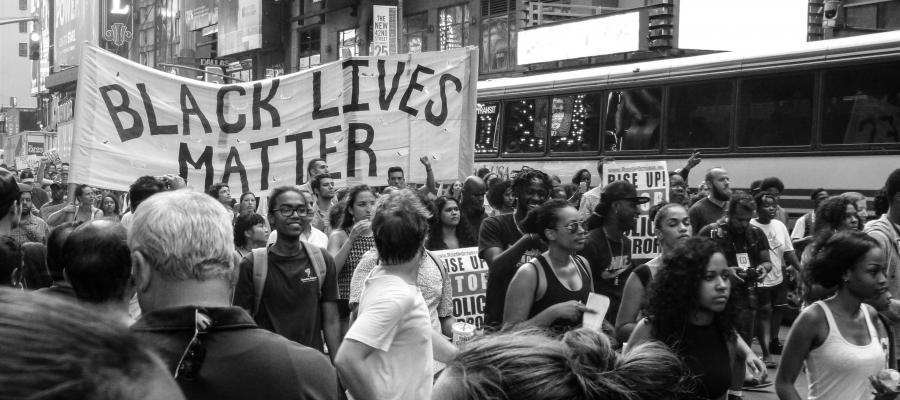Humanity Violated
Dec 21, 2014People tend to treat other people who differ from them, even in seemingly small and insignificant ways, as less than fully human.

As I write these words, my new book, On Inhumanity: Dehumanization and How to Resist It is poised to be released by Oxford University Press. This would normally be a joyous, exciting time for me. Ten years of painstaking research distilled into one, short, accessible volume is an accomplishment of which I can legitimately be proud.
But in reality, this is not a happy time for me, and not just because of the Covid pandemic. Pandemics come and go, but racism persists. Now, once again, the terrible things that I describe and try to analyze in the book have been thrust into the forefront of our collective consciousness.
First, Ahmaud Arbery, a young Black man out for a pleasant jog in a small Georgia town was executed by White vigilantes. They claimed he was a criminal. Next, a White woman walking her dog in Central Park phoned 911 to report that a Black man was threatening her life. But Christian Cooper, who was out birdwatching, had done nothing wrong. He had merely asked the woman to obey park regulations by keeping her dog on the leash. And most recently, many of us watched in uncomprehending horror as a Minnesota policeman casually kneeled on George Floyd’s neck until this helpless, handcuffed man lay limp and lifeless on the dirty pavement.
These events, and many, many, others like them are links in a chain of violence extending back for centuries. And they are manifestations of what I call demonizing dehumanization, the most dangerous form of dehumanization. Demonizing dehumanization is highly gendered—almost always, it is men from racially oppressed groups who are dehumanized in this way. These men are seen as dangerous, subhuman creatures, endowed with superhuman powers, and who must be crushed into submission.
Demonizing dehumanization is frighteningly robust. We find it wherever racist ideologies predominate. Jews were the main racialized minority in Europe during the Middle Ages, and many Christians considered Jewish men to be literally satanic beings—vile and ruthless murderers, cannibals, and vampires. However, demonizing dehumanization is highly adaptable, like a rapidly mutating virus, assuming new forms in accord with changing social ecologies.
Here, today in the United States, the main targets are African American males. As I put it in On Inhumanity:
In our increasingly secular world, the idea that dehumanized people are literally demonic or in league with Satan has lost credibility, except in religious fundamentalist circles. This did not eliminate the idea that dehumanized people are monstrous or demonic—it simply cast the basic idea in a different mold. The Medieval idea of essentially demonic people gradually morphed, from the seventeenth century onward, into the idea that there are essentially criminal ones.
The lynching epidemic of the late nineteenth and early twentieth century, and the mass incarceration of Black Americans that came in its wake, was driven by the idea that Black people— especially Black men—are criminal to their core. This was the received wisdom among many Whites, both in the North and in the South.
Hinton Rowan Helper, the man Lincoln appointed as US consul in Argentina, wrote of the “crime-stained blackness of the negro,” which he fleshed out in a popular White supremacist diatribe:
In every district and community of considerable size, on the right hand and on the left, they are almost constantly committing brutal murder and highway robbery; breaking into dwellings and warehouses; depredating on orchards, fields of grain, and granaries; appropriated to their own use other people’s cattle, pigs, and poultry; stealing everything that they can lay their hands upon; outraging pure and innocent white girls; and not infrequently, in a spirit of the most savage wantonness and revenge, setting on fire and utterly destroying the houses of their white neighbors. Terrorism reigns supreme among the white females of every family, and sleep is banished.
It is very important to recognize that such beliefs are not confined to a brutal and ignorant past. They are with us still, always simmering below the surface of White American civility. They have never been exorcized because they have never been confronted fully and honestly.
The workings of demonizing dehumanization are too complex to describe in detail here, but its toxic core is easy to set out. When Black men are dehumanized in this way, the idea is not that they commit criminal acts. It is that they are essentially criminal. Someone who is thought of as essentially criminal is regarded as criminal by nature. It is supposed to be impossible for an essentially criminal person not to be a criminal. Just as poison remains poison even if it never poisons anything, Black men are criminals even if they have never committed a crime.
This pattern of thinking has obvious and deeply disturbing implications for criminal justice. If Black men are essentially criminal, then they are guilty of the crime that is their very existence. Considerations of truth and evidence become irrelevant. Injustice masquerades as justice, and horrendous crimes ensue.
To prevent such things from endlessly recurring, it is vital to find a way to break the grip of demonizing dehumanization on the human imagination. And to do that, we need to understand how the dehumanizing mindset works. That’s why I do the work that I do. Please join me.
Photo by Nicole Baster on Unsplash